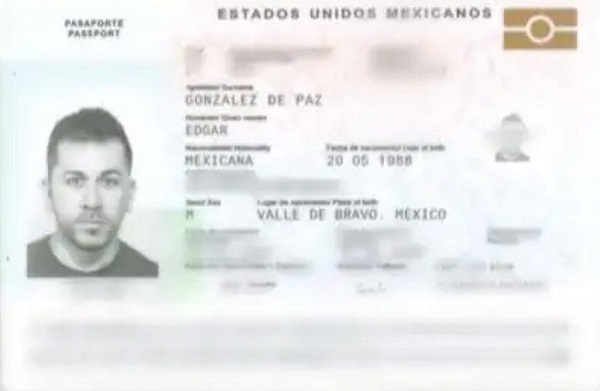International
Dan Crenshaw says he’ll “f*cking kill Tucker Carlson” on video

 MxM News
MxM News
Quick Hit:
Republican Texas Rep. Dan Crenshaw was caught on video saying he would “f*cking kill” Tucker Carlson if he ever met him, only to deny the threat shortly afterward. The footage, released by GB News, contradicts Crenshaw’s denial and raises questions about his remarks toward the Daily Caller co-founder.
Key Details:
- GB News reporter Steven Edginton posted a video showing Crenshaw making the violent comment after an interview in early February.
- Crenshaw denied the accusation when questioned by Rep. Marjorie Taylor Greene, responding with “lol, no” on X.
- GB News then released a video where Crenshaw explicitly stated he would “f*cking kill” Carlson, doubling down when Edginton initially laughed it off.
Diving Deeper:
The controversy began when GB News reporter Steven Edginton shared on X that Crenshaw made the threat after an interview earlier this month. According to Edginton, when he asked Crenshaw if he had ever met Tucker Carlson, Crenshaw responded, “I would kill him if I saw him.” When Edginton laughed, Crenshaw reportedly reiterated, “No seriously, I would kill him.”
After Edginton’s post, Republican Georgia Rep. Marjorie Taylor Greene publicly questioned Crenshaw about the accusation. Crenshaw responded dismissively, writing, “lol, no.” However, less than 30 minutes later, GB News released a video that contradicted Crenshaw’s denial.
The footage showed Edginton asking, “Have you ever met Tucker?” as the two removed their microphones. Crenshaw responded, “No, we’ve talked a lot on Twitter. If I ever meet him, I’ll f*cking kill him.” Edginton laughed, but Crenshaw continued, “No, seriously, I’ll kill him. He’s the worst person I’ve ever met.”
The release of the video prompted widespread backlash and demands for clarification. The Daily Caller reached out to Crenshaw’s office for comment, and a spokesperson responded, “No, of course not,” when asked if the statement was serious.
Crenshaw’s remarks are particularly controversial given his position as a sitting U.S. Congressman. Threats of violence, even if intended as a joke, carry serious implications and have sparked debate over the tone of political discourse in America.
This incident also adds to the ongoing tension between Crenshaw and Tucker Carlson, who have clashed over policy issues and public commentary. Carlson has been a vocal critic of establishment Republicans, a group with which Crenshaw is frequently associated.
The fallout from Crenshaw’s comments is likely to continue as political figures and media outlets react to the video. Neither Crenshaw nor Carlson have issued further statements regarding the incident at the time of this report.
“Dan Crenshaw” by Gage Skidmore, licensed by CC BY-SA 2.0.
COVID-19
Covid Cover-Ups: Excess Deaths, Vaccine Harms, and Coordinated Censorship

The UK’s Health Security Agency (UKHSA) has recently been exposed for its blatant refusal to release critical data that could reveal a potential link between Covid-19 shots and the nation’s alarming surge in excess deaths.
As The Telegraph reveals in a damning exposé, UKHSA officials invoked the “distress or anger” of bereaved families as their shield, arguing that any hint of correlation in the data might shatter the emotional well-being of those left behind.
Sonia Elijah investigates is a reader-supported publication.
To receive new posts and support my work, consider becoming a free or paid subscriber.
Subscribe to Sonia Elijah Investigates
According to The Telegraph:
The UK Health Security Agency (UKHSA) argued that releasing the data would lead to the “distress or anger” of bereaved relatives if a link were to be discovered.
Public health officials also argued that publishing the data risked damaging the well-being and mental health of the families and friends of people who died.
Last year, a cross-party group expressed alarm about “growing public and professional concerns” over the UK’s rates of excess deaths since 2020.
In a letter to UKHSA and Department for Health, the MPs and peers said that potentially critical data – which map the date of people’s Covid vaccine doses to the date of their deaths – had been released to pharmaceutical companies but not put into the public domain.
They argued that the data should be released “on the same anonymised basis that it was shared with the pharmaceutical groups, and there seems to be no credible reason why that should not be done immediately”.
UsForThem, a campaign group, requested that UKHSA release the data under freedom of information laws. But the agency refused, making a number of different arguments including that publishing the data “could lead to misinformation” that would “have an adverse impact on vaccine uptake” in the public.
UKHSA also claimed there would be a risk of individuals being identified, despite the request being made for an anonymised dataset. After a two-year battle, the Information Commissioner ruled in the UKHSA’s favour, backing its refusal to publish the data.
Gareth Eve whose wife, Lisa Shaw died from the Astra-Zeneca Covid jab, took to social media to express his opinion on the UKHSA’s refusal to disclose the data—under the guise that it will risk “damaging the well-being and mental health of families and friends of people who died.”
He wrote: “As someone who lost his amazing wife to a Covid jab. As a Dad of a little boy who lost his Mammy at the age of 6 I can assure you, my heart and my mental health is already very much broken.”
Dr Craig v the Information Commissioner & the UKHSA
UsForThem was not the only party seeking this crucial data through Freedom of Information requests. As early as 2022, diagnostic pathologist and statistician Dr Clare Craig submitted a series of FOI requests to UKHSA and ONS seeking detailed data on deaths following COVID-19 vaccination. On 4 August 2023 she made a specific request for anonymised individual-level NIMS records of adults over 20 who died after December 2020 (age at first dose, vaccination dates, and barnardised date of death). UKHSA refused disclosure. After the Information Commissioner upheld the refusal in June 2024, Dr Craig appealed to the First-tier Tribunal against both the Information Commissioner and UKHSA. The tribunal dismissed her appeal on 14 October 2025.
Dr Craig kindly gave me persmission to include the First-tier Tribunal’s 27-page decision.
Sonia Elijah investigates is a reader-supported publication.
To receive new posts and support my work, consider becoming a free or paid subscriber.
Several anomalies stand out to me:
- UKHSA repeatedly changed its legal grounds.
When Dr Clare Craig made her request in August 2023, the UKHSA originally said “no” under section 40(2) FOIA (personal data exemption). Even with barnardised death dates, the UKHSA argued that the combination of age at first dose, exact vaccination dates, and approximate death date could still allow some individuals to be re-identified. So, the UKHSA treated the requested data as third-party personal data and refused it outright.
Later, probably in preparation for the tribunal they downplayed section 40(2) and relied mainly on section 38 FOIA (Health and Safety). Section 38(1) says information is exempt if its disclosure would, or would likely to:
a] endanger the physical or mental health of any individual.
b] endanger the safety of any individual.
This exemption is not absolute but is subject to the public-interest balance test.
The UKHSA also shifted to other arguments: sections: 12 (Cost), 4 (Vexatious or repeated requests), 36 (Prejudice to effective conduct of public affairs), 41 (Actionable breach of confidence). They ultimately succeeded with the broad “health and safety” exemption (s.38) based on speculative risks of harassment or violence.
- Releasing these records (even barnardised) could lead to bereaved families being identified and harassed.
- It could fuel anti-vaccine campaigns that incite threats or violence against doctors, scientists, or public-health staff.
- It could cause serious distress to relatives who discover their loved one’s details are being discussed online.
- Misinformation/misinterpretation of the data could itself damage public confidence and therefore harm mental health on a wider scale.
In short, the UKHSA started with “this is personal data, full stop,” which later became “well, maybe it can be anonymised, but releasing it anyway would endanger people’s health or safety.” Then they threw in every possible additional exemption (cost, vexatious, political damage, and legal confidentiality) to make absolutely sure at least one would stick.
- The closed hearing and confidential bundle
Other anomalies that stood out were the following: a closed hearing on 24 June 2025 that Dr Craig was not allowed to attend. And a closed/confidential bundle of documents that she was not allowed to see. Later, the tribunal gave her a written gist (a few paragraphs) that said, in very general terms, what topics have been covered in the closed sessions and what the secret evidence was broadly about—without revealing anything that the UKHSA deemed too sensitive!
When asked for comment, Dr Craig wrote: “There is more than enough evidence that the vaccine products caused death. The majority were covid deaths in the first two weeks after injection and in the period after the third mRNA dose. Non-covid deaths also rose and these did not come in waves. However, the ONS stopped published their data when the problem became undeniable. I hope this story about hiding the data wakes people up to the failure of our institutions to respect the truth over their own agendas.”
Silencing the Signal: From Excess Deaths to Black-Ops Disinformation
This active form of suppression has gone far beyond merely downplaying any possible link between COVID shots and excess mortality. What has been actively concealed includes:
- The very fact of sustained excess deaths appearing across many countries from 2021 onward.
- The extensive evidence of harm caused by the experimental mRNA and viral-vector injections themselves, as documented in the manufacturers’ own pharmacovigilance reports submitted to regulators (reports that were meant to remain confidential). Read my analysis of these reports here, here, here, here and here.
- A systematic campaign of scientific censorship: dozens of peer-reviewed studies and preprints that identified serious adverse events, novel mechanisms of injury, or elevated mortality signals were retracted, withdrawn, or smeared—often without legitimate scientific justification.
- An overt psychological and information-warfare operation orchestrated by state actors—including the UK’s 77th Brigade and Counter Disinformation Unit, U.S. agencies, NATO’s strategic communications centres, and independent NGOs, such as the Center for Countering Digital Hate (CCDH)—all coordinated to intimidate, defame, deplatform, and silence doctors, scientists, and citizens who publicly questioned the “safe and effective” narrative.
- Collusion with Big Tech platforms to throttle, shadow-ban, or deplatform dissenting voices under the pretext of “countering disinformation.”
In 2023, I wrote about how governments and mainstream media worldwide have imposed a “veil of silence” on the issue of excess deaths, particularly after the rollout of COVID shots in mid-2021—in stark contrast with their earlier obsession with daily COVID death tallies. My piece centred on a pivotal UK parliamentary 30-minute adjourned debate on October 20, 2023, secured by then-independent MP Andrew Bridgen.

Piercing the Veil of Silence over Excess Deaths
It is important to remember how the BBC inserted live captions during Bridgen’s debate to fact-check and undermine him in real-time, labelling his claims as “misinformation.”
Molly Kingsley, co-founder of UsForThem, a campaign group (also targeted by the Counter Disinformation Unit) that requested the UKHSA to release the data under freedom of information laws, took to social media to post a further detail in their legal case.
“The UKHSA also alleged that if they released the data, someone might use it to promote a misleading impression (misinformation) about a possible relationship between dates of dosage and dates of death. They argued that this had the potential to damage confidence in vaccine programmes and so could endanger the health of the public.”
Sonia Elijah investigates is a reader-supported publication.
To receive new posts and support my work, consider becoming a free or paid subscriber.
A closer look at suppressing the link between excess deaths and Covid shots
In June last year, a bombshell study examining excess deaths on a global level, was published in BMJ Public Health by a group of researchers (Mostert et al.) from Vrije Universiteit, Amsterdam.

BOMBSHELL STUDY: 3 MILLION EXCESS DEATHS IN 47 COUNTRIES
Their results showed:
The total number of excess deaths in 47 countries of the Western World was 3,098,456 from 1 January 2020 until 31 December 2022. Excess mortality was documented in 41 countries (87%) in 2020, 42 countries (89%) in 2021 and 43 countries (91%) in 2022. In 2020, the year of the COVID-19 pandemic onset and implementation of containment measures, records present 1 033 122 excess deaths (P-score 11.4%). In 2021, the year in which both containment measures and COVID-19 vaccines were used to address virus spread and infection, the highest number of excess deaths was reported: 1 256 942 excess deaths (P-score 13.8%). In 2022, when most containment measures were lifted and COVID-19 vaccines were continued, preliminary data present 808 392 excess deaths.
The group’s findings were amplified by an article in The Telegraph: “Covid vaccines may have helped fuel rise in excess deaths.”
Notably, shortly afterwards, the Princess Máxima Center (the Paediatric Oncology centre affiliated with the authors) issued a statement, “distancing itself” from the publication. It went on to assert: “The study in no way demonstrates a link between vaccinations and excess mortality; that is explicitly not the researchers’ finding. We therefore regret that this impression has been created.”
This triggered BMJ Public Health to respond with an “expression of concern” a few days later, stating: “The integrity team and editors are investigating issues raised regarding the quality and messaging of this work.”

CENSORING THE SCIENCE: Bombshell Study on Excess Deaths Faces Retraction
The last update, in January 2025, stated: “BMJ are awaiting the result of an institutional investigation into the conduct of the work, which was due to be finalized by the end of 2024. At present, the institution can offer no update on when the information will be sent to BMJ.”
Also noteworthy is that on 25 August 2023, the UK Office for National Statistics (ONS) announced that it would no longer update its “Deaths by vaccination status, England” series, marking the end of its regular publications. The ONS stated: “We will no longer be updating the Deaths by vaccination status analysis, England series.” No specific reasons were detailed in the notice. This begs the questions: what caused ONS to make such a decision? Is it because an inconvenient pattern of truth was emerging that went against the “safe and effective” narrative?
On 18 April 2024, Andrew Bridgen managed to secure a landmark two-hour House of Commons debate on excess deaths since 2021 and their link to mRNA COVID vaccines.

Debate in Parliament Ignites over Excess Deaths and Vaccine Safety Concerns
Describing it as “the greatest medical scandal in living memory,” Bridgen — himself double-vaccinated and vaccine-injured — accused authorities of deliberately hiding and manipulating data, abandoning proven protocols, and using midazolam/morphine under NICE NG163 to hasten deaths. He highlighted UK Office for National Statistics (ONS) baseline changes that erased ~20,000 excess deaths in 2023 and their refusal to release anonymised record-level data.
The “inconvenient” data secured by Wouter Aukema
My series of interviews with senior data patterns & forensics analyst, Wouter Aukema, have been extremely revealing. Aukema and his team’s software was able to download 15 million case safety reports (within and outside of Europe) for 6000 drugs and vaccines from European Medicines Agency’s EudraVigilance system for the past 20 years. This information was presented on dashboards, built to make public pharmacovigilance data accessible and navigable. They shockingly revealed a three-fold increase in case safety reports for the Covid vaccines (at the start of the rollout) compared to all the other drug products and substances- over the past 20 years.

True Horrors of Covid Vaccine Harm Data NOW Exposed!
In my second interview with Aukema, he dropped the biggest bombshell. According to his systematic downloading of the data from EudraVigilance (which includes case safety reports from around the world not just the EU)- 40% of worldwide serious case safety reports (including hospitalization and death) in relation to Covid vaccines (only) have been removed from the European Medicines Agency’s database from October 2021-November 2022. In addition, case safety reports have also been retroactively modified, after their data lockpoint (DLP).

Data Crimes: Deleting Covid Vaccine Deaths
Only last month, I broke the story how the European Medicines Agency (EMA) had sent a letter to Aukema demanding he immediately delete the pharmacovigilance data dowloaded from EudraVigilance. It has also come to light that similar EMA letters were sent to French researchers Emma Darles and Pavan Vincent.

BREAKING: Data Analyst Faces EMA’s Demand to Delete Pharmacovigilance Data!
Just a day before Aukema was going to present his findings at the Back to the Future conference, he discovered an email from the EMA in his spam folder, with a subject line that sent chills: “Request to immediately delete non-public information originating from the EudraVigilance system and made available on the dashboards you have on Tableau Public.”
Sonia Elijah investigates is a reader-supported publication.
To receive new posts and support my work, consider becoming a free or paid subscriber.
One of the key claims alleged by the EMA was that Aukema’s dashboards, which include worldwide unique case identifiers and country-of-origin data, pose an “indirect” risk of identifying patients. “I have no access to patients’ birth dates or names,” he insisted. “Even if that data was available, I would never have downloaded it. My objective is to gather insights on patterns, not to find people.”
After further discussions with Wouter Aukema, he revealed a disturbing practice affecting approximately 40% of serious (including fatal) COVID-19 vaccine adverse-event reports.
Whenever a case narrative is updated – even for the most trivial edit, such as inserting a comma – the system generates an entirely new case ID number and a new receipt date. The previous version of the report, with its original identifier and timestamp, is permanently overwritten and becomes untraceable. There is no audit trail, no version history, and no way to retrieve the original entry. Aukema describes this as “a floating duck.”
On the surface everything appears normal, but the critical reference points are in constant motion, making it impossible to track changes or hold anyone accountable for what has been altered or suppressed. He suspects that this systematic erasure of original reports is not accidental. In his view, the manipulation originates from the pharmaceutical companies themselves and from national pharmacovigilance authorities – including Lareb in the Netherlands and, by extension, equivalent bodies such as the MHRA (Yellow Card scheme) in the United Kingdom – whose databases feed into the European system.
In short, not only are serious and fatal cases being under-reported or retrospectively downgraded; in a large proportion of instances, the original evidence that they were ever reported in the first place is being deliberately and irreversibly destroyed.
Now, turning back to the UKHSA’s blank refusal to release critical data which could expose the link between excess deaths and the Covid shots—perhaps this link could be found in Aukema’s damning data sets, which include case safety reports from the UK for the Covid shots.
Each individual case safety report (ICSR) in EudraVigilance includes (when reported): date of vaccination, date of onset of the adverse reaction, and the date of death (if fatal). If a large, tightly clustered peak of fatal reports were visible in the first 0–14 days—and especially if that peak exceeded the reporting bias and background mortality expected in the vaccinated population—it would represent a very strong safety signal requiring urgent investigation.
Is this the reason why the EMA are so fixated on the deletion of the country-of-origin data? Could it be a case of an orchestrated cover up shared by regulators amid liability fears?
Sonia Elijah investigates is a reader-supported publication.
If you appreciate the hard work I do as an independent investigative journalist,
please consider supporting me with a paid subscription or buy me a coffee!
Daily Caller
BREAKING: Globalist Climate Conference Bursts Into Flames
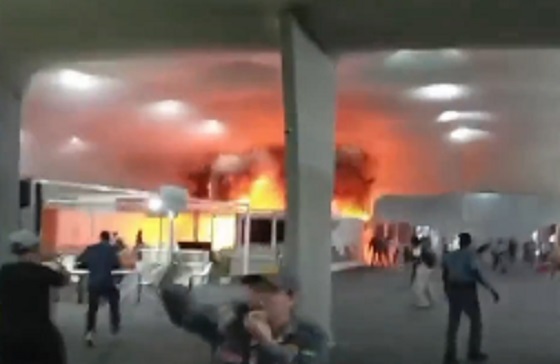

From the Daily Caller News Foundation
By Audrey Streb
A fire erupted at the United Nations climate conference in Belém, Brazil on Thursday, according to the Brazilian publication GloboNews.
Firefighters worked to extinguish the flames engulfing the pavilion roof, and the power was cut off in regions across COP30 as authorities evacuated the section known as the “blue zone,” according to GloboNews. One official reportedly told GloboNews that the fire is now contained.
Ministro do Turismo diz que estrutura da COP30, em Belém, é feita de material antichamas. Incêndio grave atinge pavilhões. #Estúdioi
➡ Assista à #GloboNews: https://t.co/bFwcwLpLU9 pic.twitter.com/ZvejBMnPoa
— GloboNews (@GloboNews) November 20, 2025
Over 190 countries and around 50,000 attendees are at the conference, according to multiple reports. Notably, a top United Nations official reportedly directed Brazilian authorities to immediately address concerns like leaky light fixtures, unbearable heat and insufficient security personnel at the conference on Nov. 12, according to Bloomberg.
This is a breaking news story and will be updated.
-
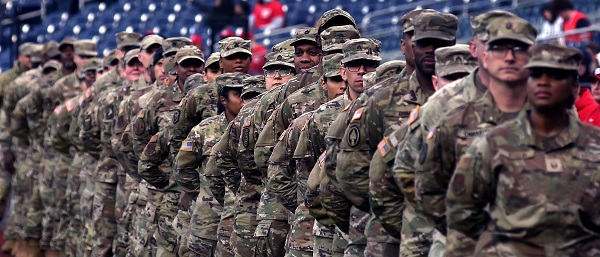
 Daily Caller2 days ago
Daily Caller2 days agoDemocrats Explicitly Tell Spy Agencies, Military To Disobey Trump
-
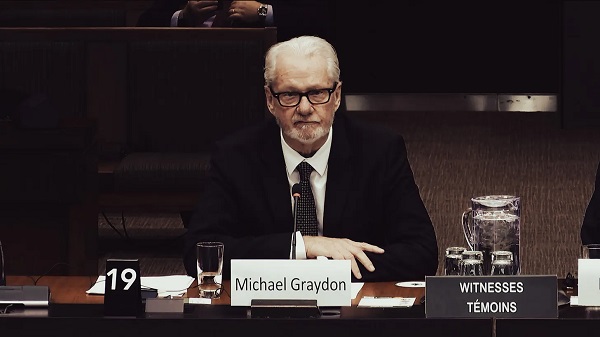
 Business2 days ago
Business2 days agoNearly One-Quarter of Consumer-Goods Firms Preparing to Exit Canada, Industry CEO Warns Parliament
-
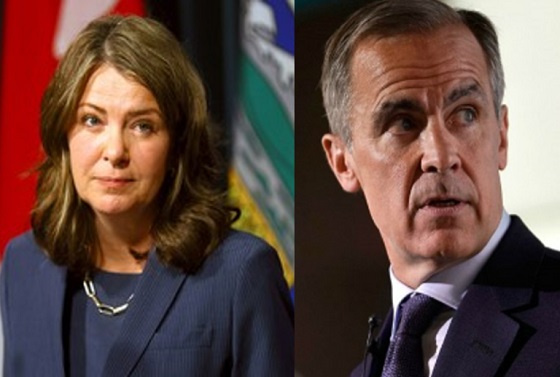
 Energy2 days ago
Energy2 days agoCarney bets on LNG, Alberta doubles down on oil
-

 Alberta1 day ago
Alberta1 day agoAlberta on right path to better health care
-
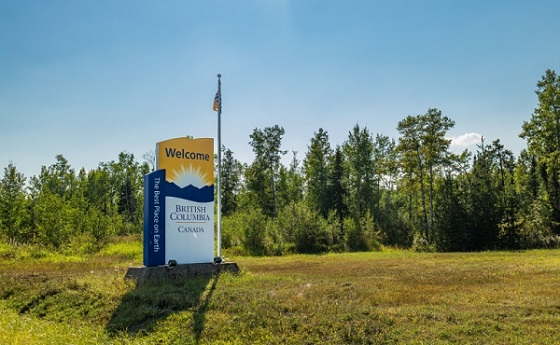
 Indigenous2 days ago
Indigenous2 days agoTop constitutional lawyer slams Indigenous land ruling as threat to Canadian property rights
-

 Alberta1 day ago
Alberta1 day agoAlberta Emergency Alert test – Wednesday at 1:55 PM
-

 Alberta1 day ago
Alberta1 day agoCarney government’s anti-oil sentiment no longer in doubt
-
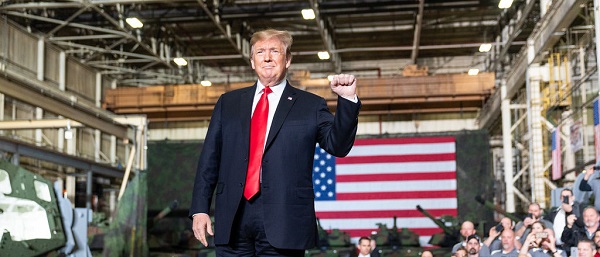
 Daily Caller2 days ago
Daily Caller2 days agoALAN DERSHOWITZ: Can Trump Legally Send Troops Into Our Cities? The Answer Is ‘Wishy-Washy’





